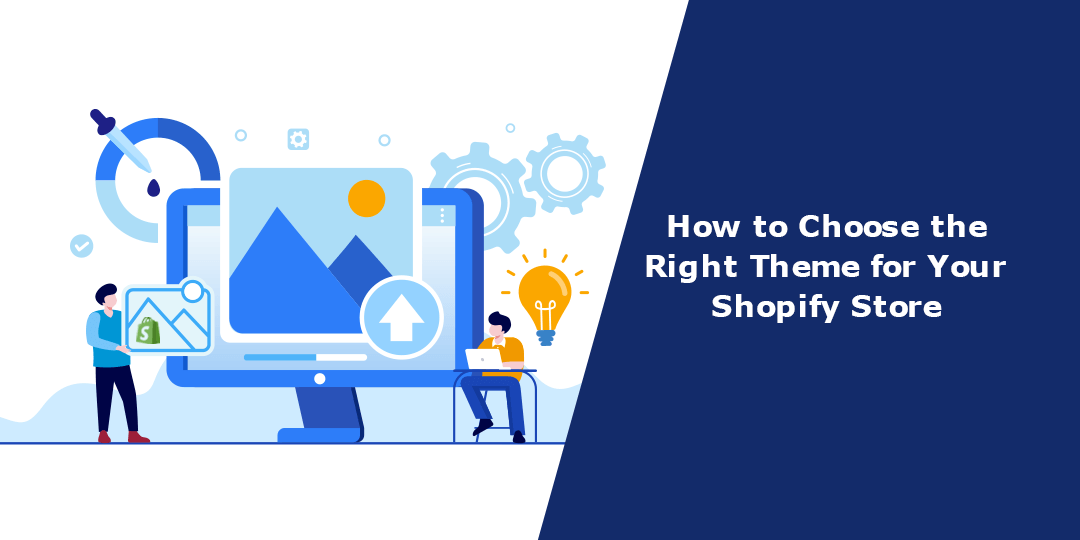A Practical Guide to Building a Successful E-commerce Website on Shopify
.png)
Understanding the Importance of an E-commerce Website
E-commerce websites have become crucial for businesses in today's digital age. They allow businesses to reach a wider audience, sell products or services online, and provide a convenient shopping experience for customers. Having an e-commerce website opens up new possibilities for growth and revenue generation.
Benefits of Using Shopify
Shopify is a popular and user-friendly e-commerce platform that offers numerous benefits for building and managing your online store. Some key advantages include easy setup and customization, a wide range of professional themes, secure payment options, and integrated marketing tools. Shopify takes care of the technical aspects of running an online store, allowing you to focus on growing your business.
-
Setting Clear Objectives and Goals for the Online Store - Before diving into building your e-commerce website, it's important to set clear objectives and goals for your online store. What do you want to achieve with your e-commerce website? Are you aiming to boost sales, grow your customer base, or enhance brand visibility ? Defining your goals will help guide your decision-making and ensure that your website aligns with your business objectives.
-
Conducting Market Research - To effectively target your audience, conduct thorough market research.Gain insights into the demographics, preferences, and requirements of your prospective clientele. This research will help you tailor your website and marketing efforts to attract and engage the right audience.
-
Defining Buyer Personas - Create specific buyer personas that represent your target customers. These personas should include details such as age, gender, interests, and buying behaviors. By understanding your audience on a deeper level, you can create a more personalized and impactful website experience.
-
Analyzing Competitor Websites and Identifying Gaps - Analyze your competitors' websites to identify their strengths and weaknesses. Look for opportunities to differentiate your online store and fill any gaps in the market. By offering something unique or providing a better user experience, you can attract customers away from your competitors.
How to Choose the Right Theme for your Shopify Store

Exploring Shopify's Theme Marketplace - Shopify offers a wide variety of themes in their marketplace, catering to various industries and design preferences. Take your time to explore different themes, keeping in mind your brand identity and target audience. Look for themes that are visually appealing and offer the functionality you need for your e-commerce website.
Considering Mobile-Friendly Design - With the increasing use of mobile devices for online shopping, it's crucial to choose a theme that is mobile-friendly. Ensure that the theme you select provides a seamless user experience across different devices and screen sizes.
Customizing Themes to Match Your Brand's Identity - Customize the chosen theme to align with your brand's identity. Add your logo, select brand colors, and choose fonts that reflect your brand's personality.
Optimizing Navigation and User Experience

-
Crafting Intuitive Site Navigation-Design a clear and intuitive navigation structure that allows visitors to easily find what they're looking for. Utilize well-defined categories and subcategories to structure your products or services. Implement a search feature to offer users a swift and effective means of locating specific items.
-
Enhancing Product Filtering and Sorting Options - Enable robust filtering and sorting options to enhance the user experience. Allow users to narrow down their search results based on attributes such as price, size, color, or any other relevant criteria. This will make it easier for customers to find products that meet their specific needs.
-
Incorporating User Feedback for Improvement - Regularly gather feedback from your customers to identify areas for improvement in your website's user experience. Conduct surveys, analyze customer reviews, and keep an eye on user behavior metrics. Use this feedback to make data-driven decisions and continuously enhance your e-commerce website.
-
Investing in Professional Photography- High-quality images generate trust and help customers visualize the product before making a purchase. Hire a professional photographer or invest in a good camera and lighting equipment if you prefer to take the photos yourself.
-
Optimizing Image Sizes for Fast Loading Speed - Optimize your product images for fast loading speed to provide a seamless browsing experience. Compress the images without compromising their quality and dimensions. This will ensure that your website loads quickly, reducing the risk of potential customers leaving due to slow loading times.
-
Utilizing Zoom and Multiple Angles for Better Visualization - Enable zoom functionality and provide multiple product images from different angles. This allows customers to examine the product in detail and provides a more comprehensive visual representation. Clear and detailed product images help build trust and increase the likelihood of conversions.
-
Highlighting Key Features and Benefits - Craft compelling product descriptions that highlight the key features and benefits of each product. Clearly communicate how the product solves a problem or fulfills a need for the customer. Use persuasive language to create an emotional connection and highlight the unique selling points of your products.
-
Utilizing Persuasive Copywriting Techniques - Utilize persuasive copywriting techniques to hook your audience and drive them towards making a purchase. Use storytelling, customer testimonials, and social proof to convince potential customers of the value your products offer.
-
Incorporating Customer Reviews and Testimonials - Incorporate customer feedback and testimonials to establish trust and enhance credibility. Display these reviews prominently on your product pages to provide social proof. Encourage satisfied customers to leave reviews and testimonials to further enhance the authenticity of your product descriptions.
Implementing Effective Product Categorization
-
Creating Clear and Logical Categories - Organize your products into clear and logical categories that make sense to your target audience. Avoid overwhelming customers with too many categories and ensure that the category names are easy to understand. This will help visitors navigate your website effortlessly and find the products they are looking for.
-
Utilizing Subcategories and Tags - Utilize subcategories and tags to further refine and group your products within the main categories. This allows for more specific sorting and filtering options. Implementing subcategories and tags can help customers find products that meet their exact requirements more efficiently.
-
Optimizing the Use of Filters -Take advantage of filtering options to make the product search process easier for your customers. Enable filters based on attributes such as price, size, color, brand, or any other relevant factors. This will save customers time and effort, leading to a more satisfying shopping experience.
-
Implementing Single-Page Checkout - Simplify the checkout process by implementing a single-page checkout flow. Condense the necessary steps onto a single page, eliminating the need for customers to navigate through multiple pages. This reduces friction and increases the likelihood of completing the purchase.
-
Offering Guest Checkout Option - Provide the option for customers to checkout as a guest, without the need for creating an account.Numerous customers favor a fast and convenient checkout experience. By offering guest checkout, you remove a potential barrier to conversion and increase customer satisfaction.
-
Enabling Autofill and Address Lookup - Make it easy for customers to fill in their shipping and billing details by enabling autofill and address lookup features. This saves time and effort for customers and reduces the likelihood of errors in their information. A smooth checkout experience increases customer confidence and encourages repeat purchases.
Building Trust with Secure Payment Options
-
Integrating Reliable Payment Gateways - Incorporate dependable and secure payment gateways on your e-commerce site. Provide a range of payment choices to align with customer preferences, ensuring a seamless shopping experience. Popular payment gateways such as PayPal, Stripe, and Apple Pay provide a sense of trust and security for customers.
-
Displaying Trust Badges and SSL Certificates - Display trust badges and SSL certificates on your website to reassure customers of the safety and security of their personal and payment information. Trust badges from reputable security vendors and SSL certificates indicate that your website is encrypted and secure.
-
Securing Customer Data and Privacy - Implement strong security measures to protect customer data and privacy. Use secure protocols for data transmission, regularly update your website's security software, and educate your employees about best practices for handling sensitive customer information. Prioritize customer privacy and make it clear in your privacy policy.
Implementing Abandoned Cart Recovery Strategies
-
Sending Automated Reminder Emails - Implement an automated email system that sends reminders to customers who have abandoned their carts. Send personalized and timely emails reminding customers to complete their purchase. Offer incentives such as discounts or free shipping to entice them back to your website.
-
Offering Incentives for Returning Customers - Provide incentives to encourage returning customers to complete their purchases. Offer exclusive discounts or loyalty rewards for customers who have previously abandoned their carts but returned to make a purchase. This helps build customer loyalty and increases the chances of conversion.
-
Analyzing and Optimizing Abandoned Cart Metrics - Regularly analyze abandoned cart metrics to identify patterns and potential issues in your checkout process. Use analytics tools to gain insights into why customers are abandoning their carts. Optimize your checkout flow based on these insights, making adjustments to reduce barriers and increase conversions.
Conclusion
To create a thriving Shopify e-commerce website, it's essential to carefully plan your approach, pay attention to even the smallest details, and continually improve your site's performance. Emphasize a customer-centric approach, offering exceptional products and delightful user experiences, and adapt to evolving market demands to ensure long-term success. Remember, success in the e-commerce world is an ongoing journey, not a one-time destination.





















Comments